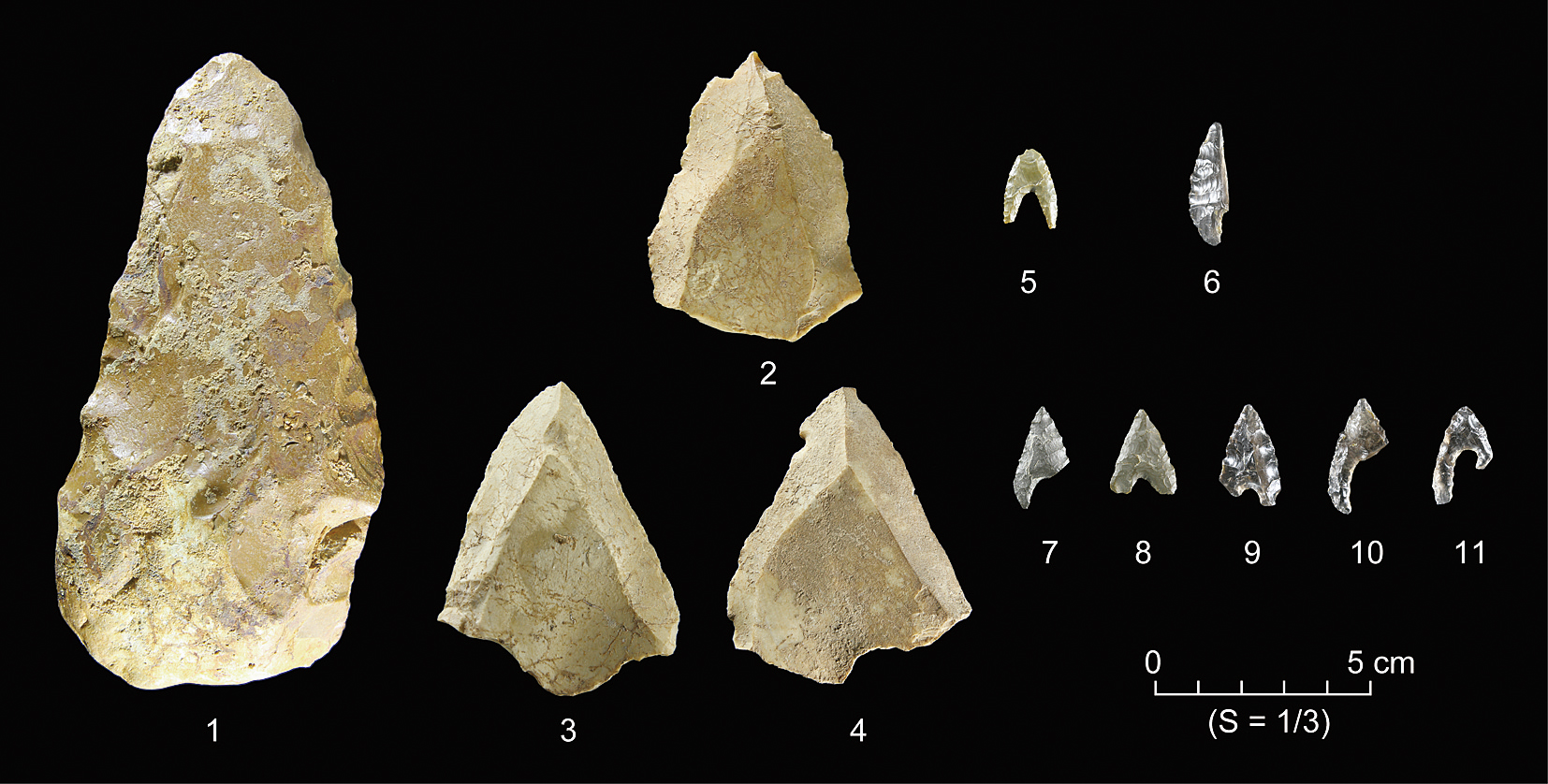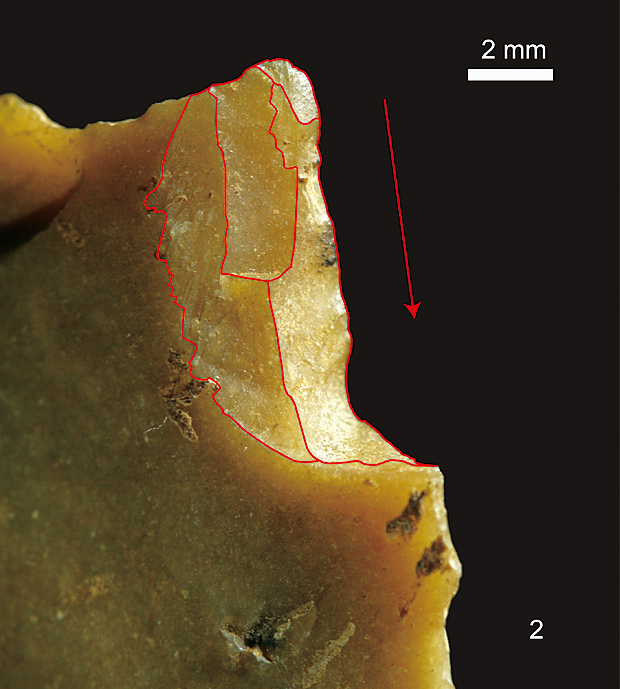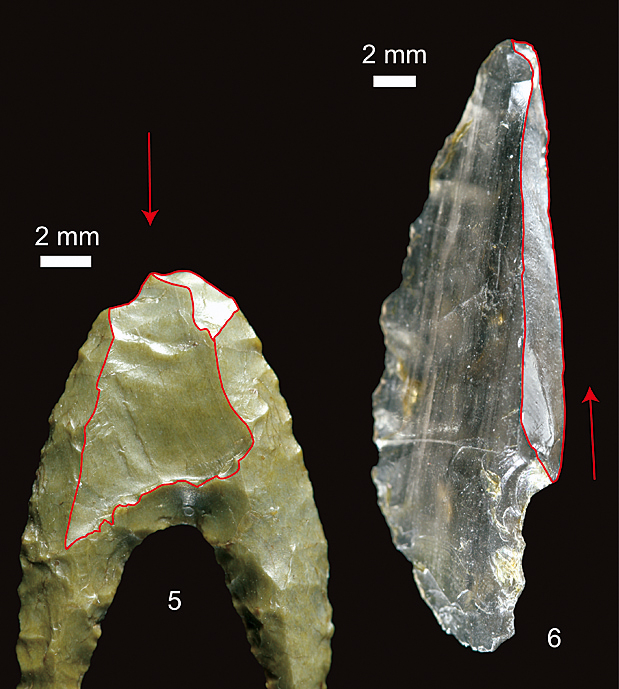B53
Miniaturization of stone tools
advances in hunting technology
Stone tools are the first artificial tools in human history. The earliest stone artifacts appeared in East Africa about 2.6 Ma and more advanced stone tools, handaxes, emerged around 1.75 Ma. The human groups equipped themselves with handaxe technology expanded out of Africa and first reached Western Asia. The handaxe exhibited here was collected at Latamune, Syria, dated at ~700 Ka. Use-wear studies suggest that handaxes were predominantly used for butchering animals. Neanderthals emerged around 300 Ka in Europe and slightly later in Western Asia. They produced large numbers of flake tools from a single nodule and hafted them with a shaft. The exhibited Levallois points were recovered from Amud Cave, Syria and were probably used as a stone tip attached onto to a wooden spear shaft. One of the Levallois points has impact fractures from hitting into an animal target. Stone tool weaponry made by Homo sapiens became smaller and was produced in larger quantities. The development of projectile technology, using spearthrowers or bows, would have led to the miniaturization of the stone tips. The arrowheads exhibited here were collected from a Jomon site at Suwa-kotei Sone in Nagano, Japan, dated at around 13 Ka. Several of these arrowheads show impact fractures as large as their length, indicating high impact energy. (Katsuhiro Sano)



